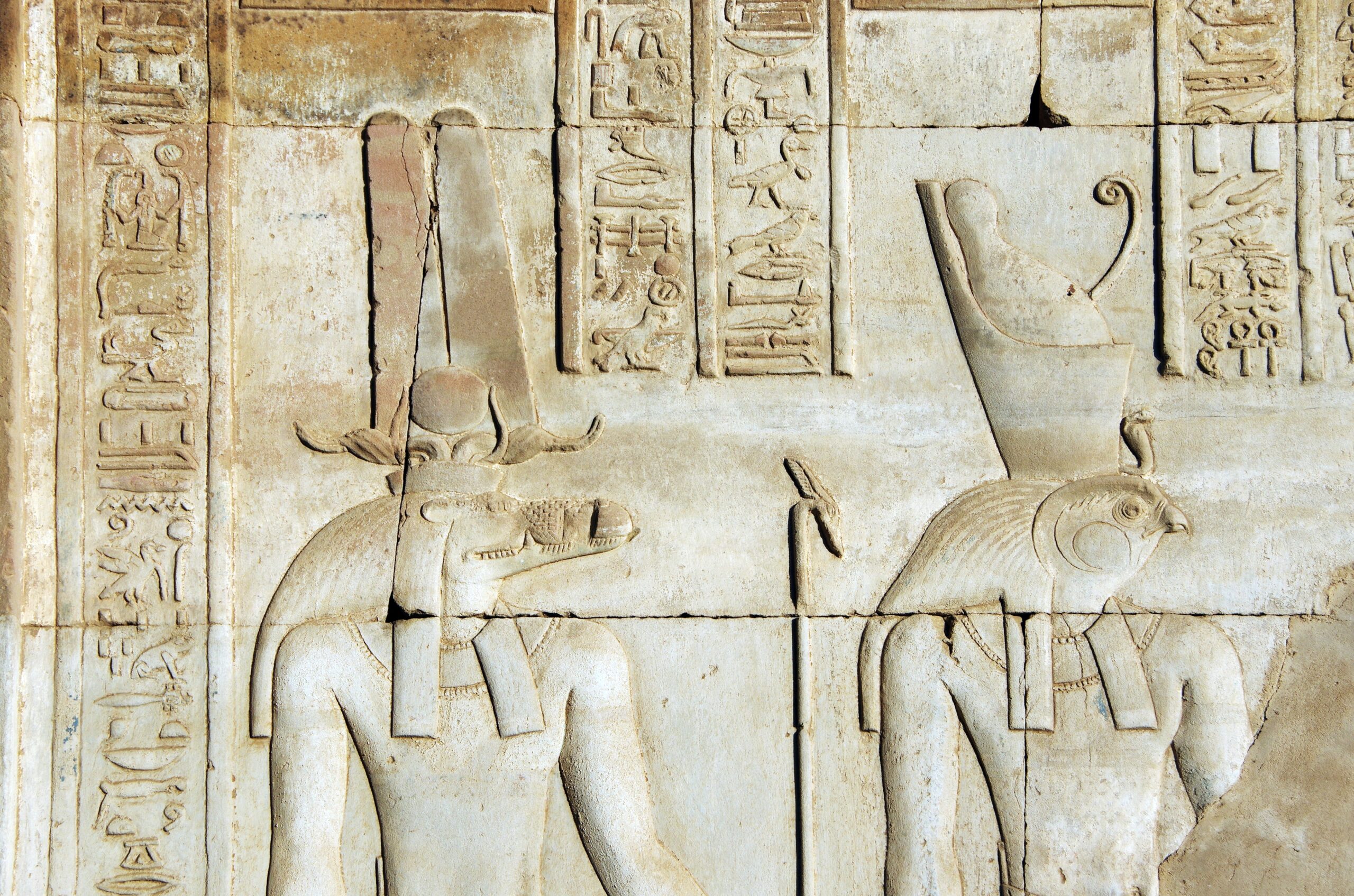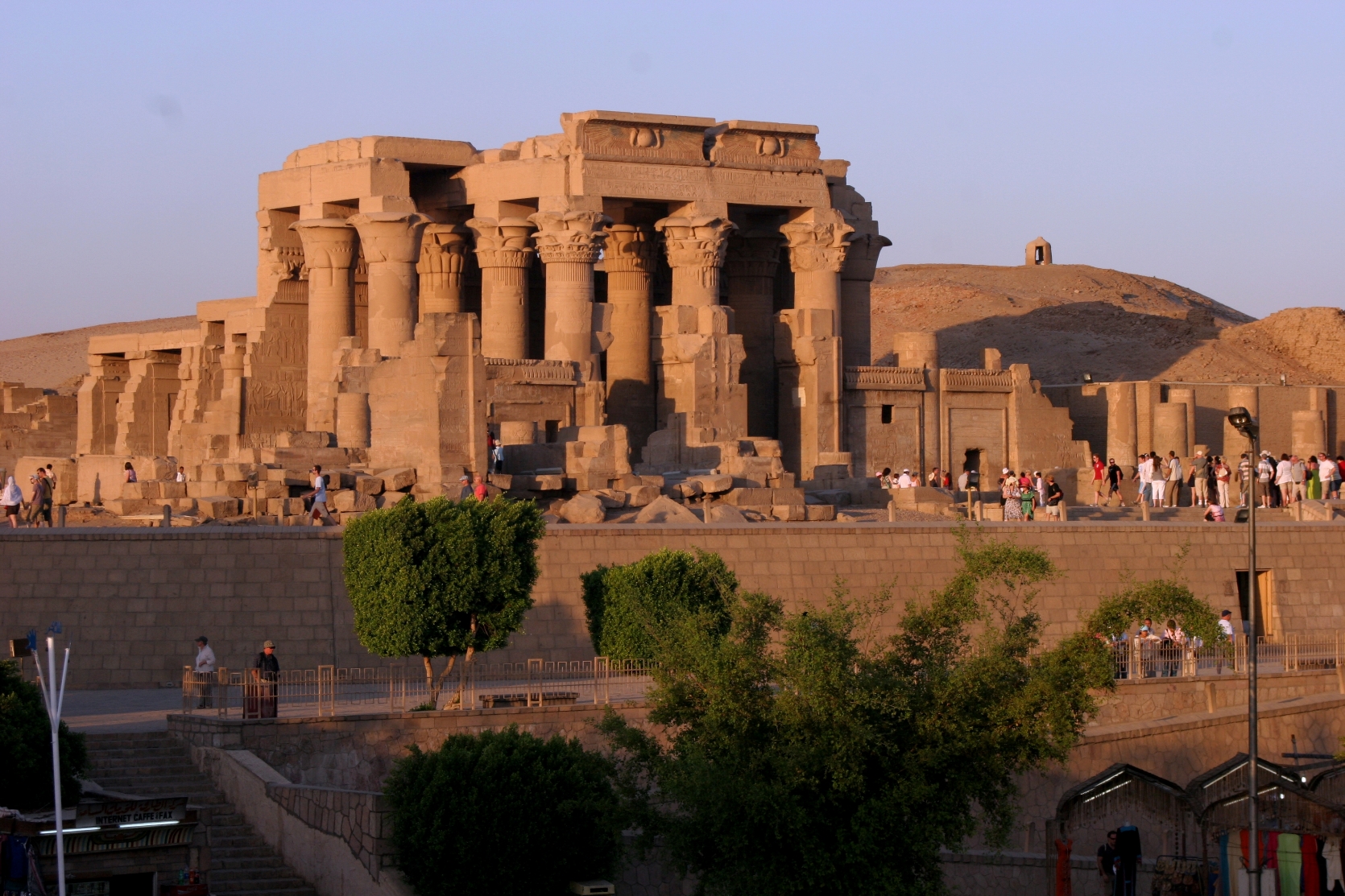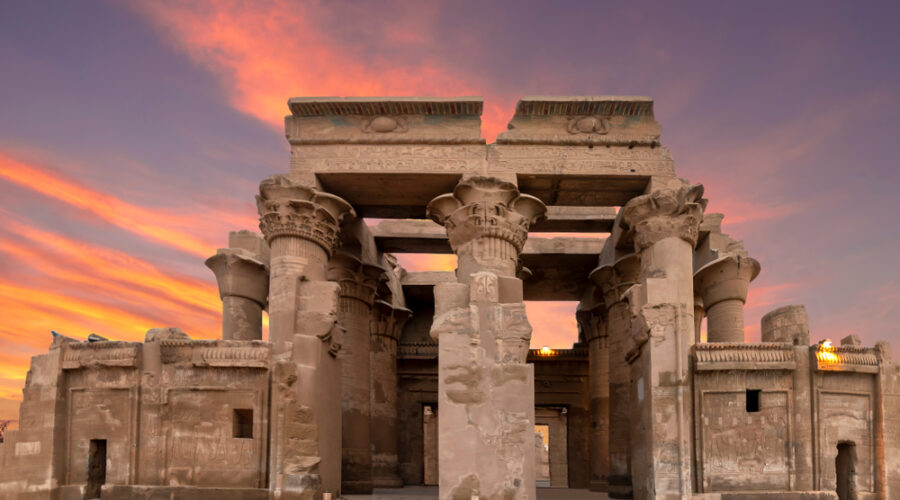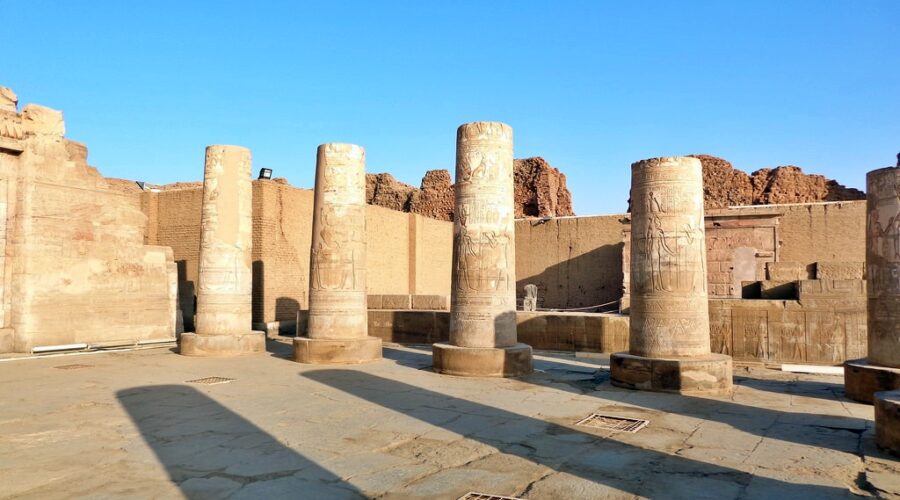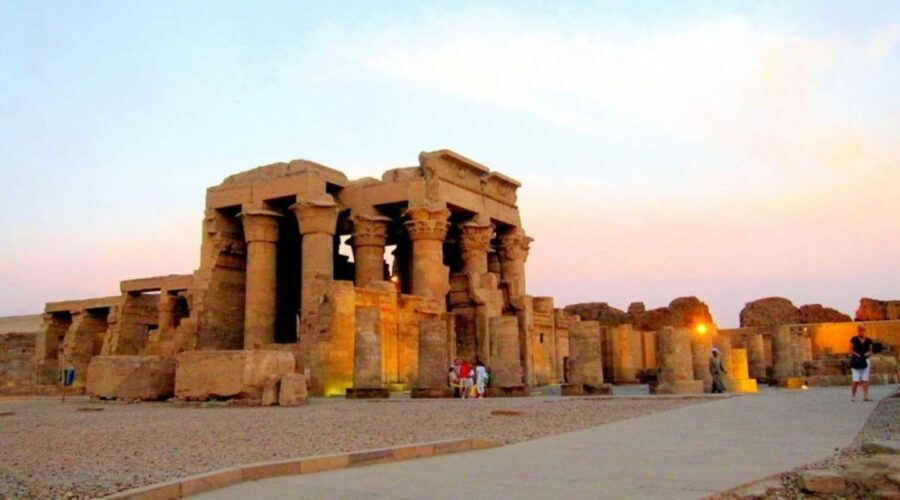How to visit Kom Ombo Temple
The vestibules and the sanctuary of the temple
Then there is the first of three lobbies (each one slightly higher than the previous one), which were decorated during the reign of Ptolemy VI. Reliefs on the back wall depict the temple’s founding ceremony – Seshet, the goddess of writing, measures its territory-and offerings and libations in honor of Sobek. These rites were repeated periodically in order to maintain the ritual purification of the place.
The next vestibule, the hall of offers, was reserved for priests only. A dilapidated room on the right had once been used to store vestments and sacred texts.
Scenes of sacrifice to Haroeris, a description of the temple and a prayer to Sobek are preserved on the southern wall, and a tiny relief image of a woman giving birth is preserved here.
Also pay attention to the figures that are painted on the ceiling. A magnificent relief, located between the doors of the sanctuaries, depicts Ptolemy and his wife-sister next to a palm tree, on which hangs the sign Heb-sed, indicating the years of the king’s reign.
The king is honored by Khonsu, crowned with a blue Crescent and a red disk, as well as Haroeris and Sobek (symbolizing air and water respectively), while Ptolemy himself sports a Macedonian cloak.
Sanctuaries
Little remains of the sanctuaries themselves, but this allows a glimpse of the secret corridor between them. It is thought that the priest would speak for the gods from here. The corridor’s entrance is through an underground crypt in the central shrine in the northern inner corridor.
The outer corridor and surroundings of the temple
The flagstones of the outer corridor between the Hellenistic temple and the Roman walls are covered with inscriptions of pilgrims. This was how they passed the time before going to the Seelie healer, whose statue stood in a small niche behind the Central oratory. Carved on the walls, their ears listened to their prayers, and the images of their eyes symbolized the health they hoped to achieve.
These reliefs have almost been erased by the touch of many hands, while others are better preserved. One of the reliefs depicts Marcus Aurelius offering a pectoral to TA-Saint-Nefer, The “Good sister”.
Other images attest to the high development of surgery almost 2 thousand years ago: here are depicted medical instruments– a scalpel, suction, a medical saw, and accessories of a dentist.
The Nilometer
Worth visiting in the temple grounds is the Sacred Well just west of the Outer Hypostyle Hall. This large round well has two stairways descending to its depths and was used as a Nilometer: priests would calculate taxes for the year by measuring the depth of the Nile.
Other annexes
A small pool nearby was used for raising sacred crocodiles. In the Chapel of Hathor near the entrance are three crocodile mummies, which were uncovered during nearby roadworks in the 1970s.
The Birth House of Ptolemy VII was mostly washed away by the Nile in the 19th century, but a doorway remains intact. See the Edfu Temple for an example of a surviving birth house, which was an element unique to Ptolemaic temples. A few faint reliefs can still be seen, including one showing Ptolemy IX and two gods in a papyrus thicket, observed by an ithyphallic Min-Amun-Re holding lettuce (symbolizing fertility).


